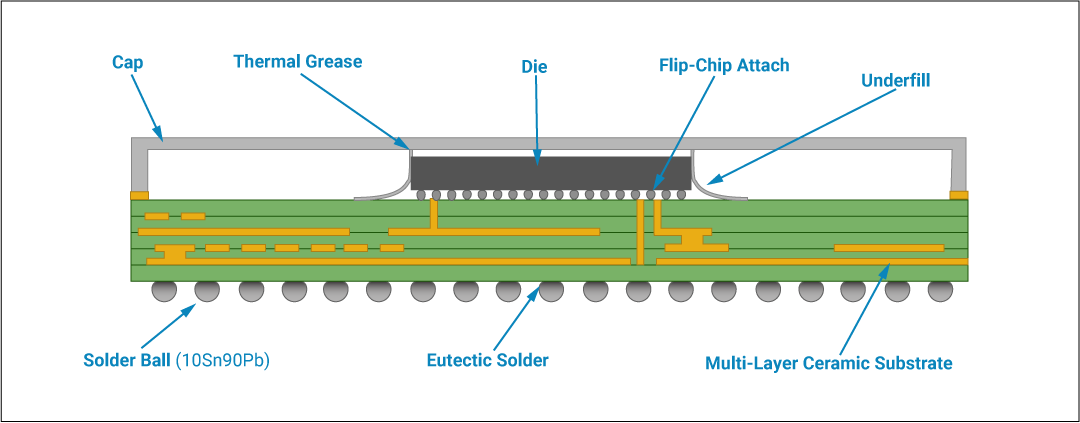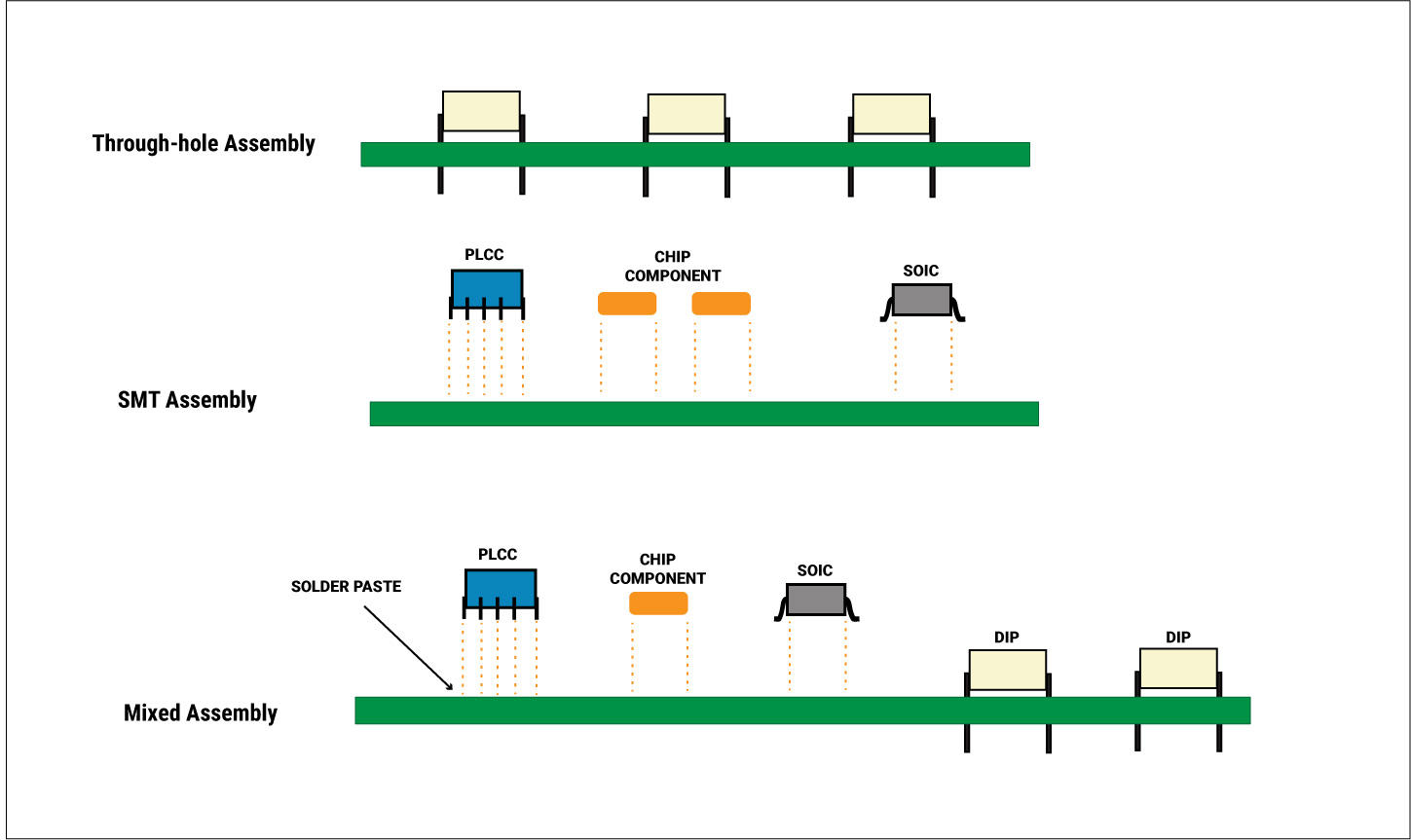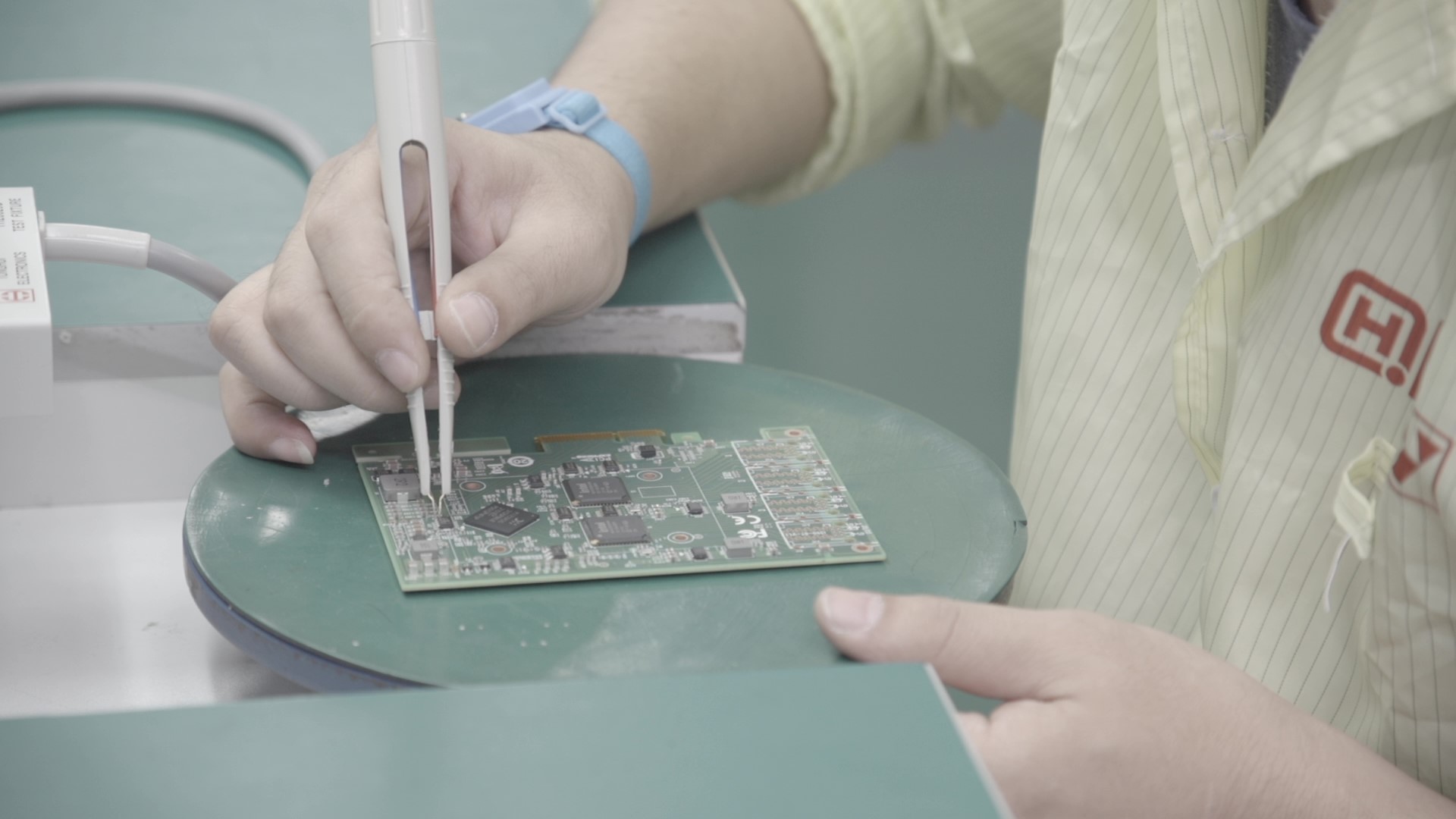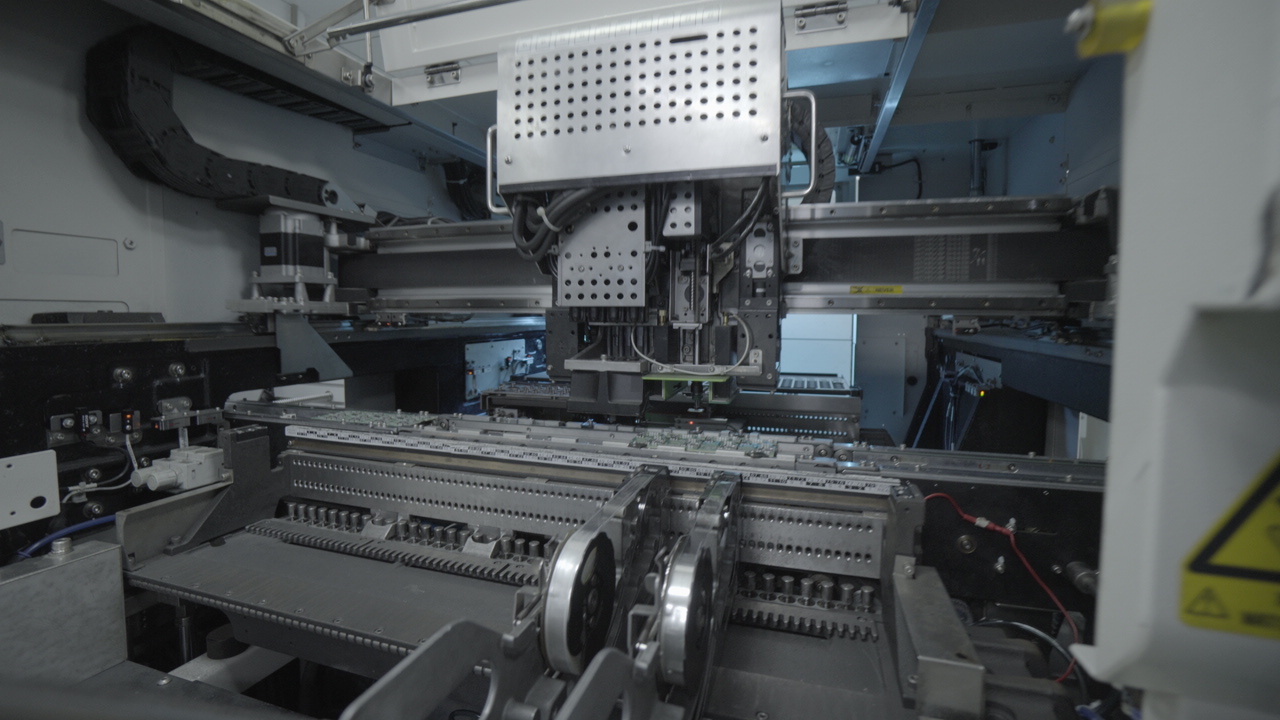PCB assembly is an essential step in electronics manufacturing, transforming raw PCBs into populated boards that can perform designated functions.
Without assembly, a PCB is little more than a piece of fiberglass. With proper assembly, a PCB becomes the brain or backbone of an electronic device.
This guide will walk you through everything you need about printed circuit board assembly (PCBA) process. We'll start with some PCB basics, then outline the steps before and during assembly, the different assembly methods, volumes, and more.
We'll also showcase why our company is equipped to handle all your PCB assembly needs.
If you're new to PCBA manufacturing or looking to find a reliable assembly partner, you'll learn the ins and outs of the process here.
Let's get started!
PCB Design Basics
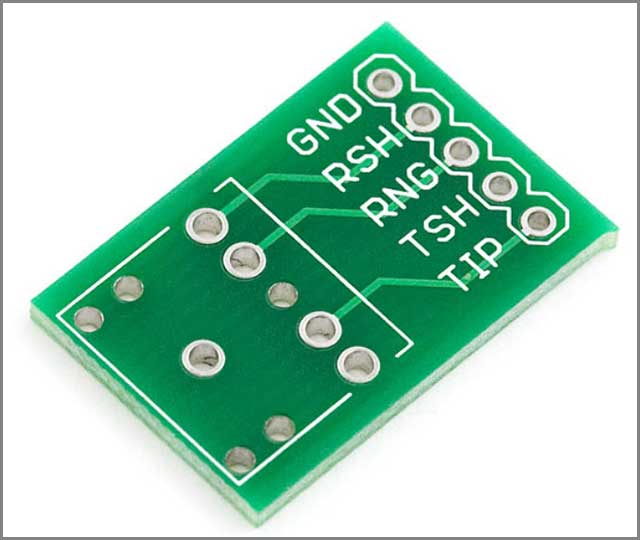
Before immersing ourselves in the intricacies of PCB assembly, we must first build a foundational comprehension of the components constituting a finished printed circuit board.
In essence, a PCB substrate forms the underlying foundation, typically composed of sheets of rigid FR-4 fiberglass. Onto this base, intricate copper traces are etched to electrically interconnect various points across the board through conduits dubbed traces.
Pads constitute the flat metal surfaces upon which the component leads or solder balls are affixed. Electronic components such as resistors, integrated circuits, capacitors, transistors, and the like are mounted onto the pads and holes to imbue the PCB with the desired functionality during assembly.
Plated-through holes deliver connections between the various layers, the number of which defines whether the PCB is single-sided, double-sided, or a multi-layer variant. The vias enable electric connectivity between layers by plating the walls of holes drilled through the layers.
Overlaying the traces, the solder mask constitutes an insulating layer intended to avert electrical shorts and corrosion. Silkscreen refers to the printed markings encompassing component identifiers, polarity indicators, logos, and other pertinent details.
The PCB design process entails mapping the circuit requirements into the optimal board layout and pad placements to enable straightforward component assembly later on. With a commanding grip on a PCB's basic constituents and functionality, we solidify the foundation necessary to delve into the captivating process of assembly next.
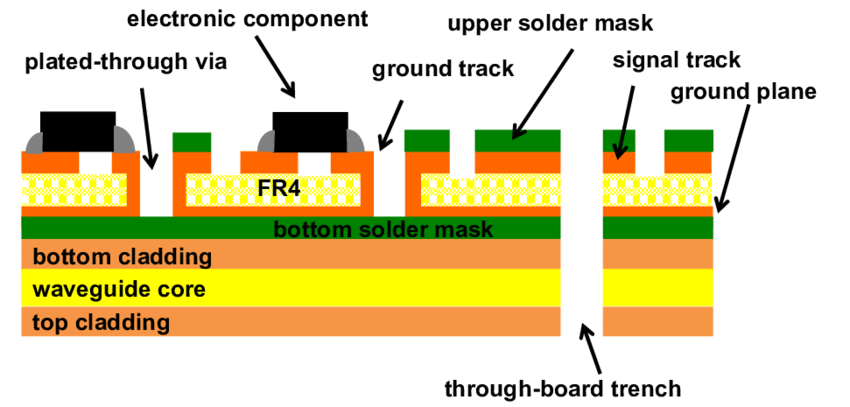
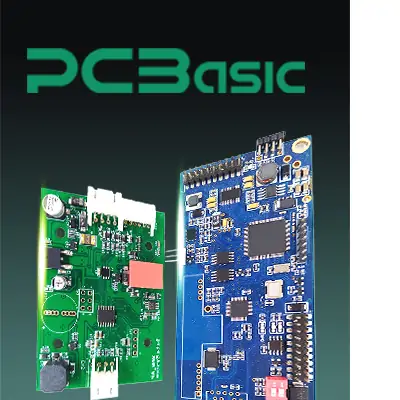 About PCBasic
About PCBasic
Time is money in your projects – and PCBasic gets it. PCBasic is a PCB assembly company that delivers fast, flawless results every time. Our comprehensive PCB assembly services include expert engineering support at every step, ensuring top quality in every board. As a leading PCB assembly manufacturer, we provide a one-stop solution that streamlines your supply chain. Partner with our advanced PCB prototype factory for quick turnarounds and superior results you can trust.
What is PCB Assembly?
So, what exactly constitutes PCB assembly? Simply put, it's the process of soldering various electronic components onto the printed circuit board. This process transforms the bare PCB from its static state into a functional electronic circuit that performs designated tasks.
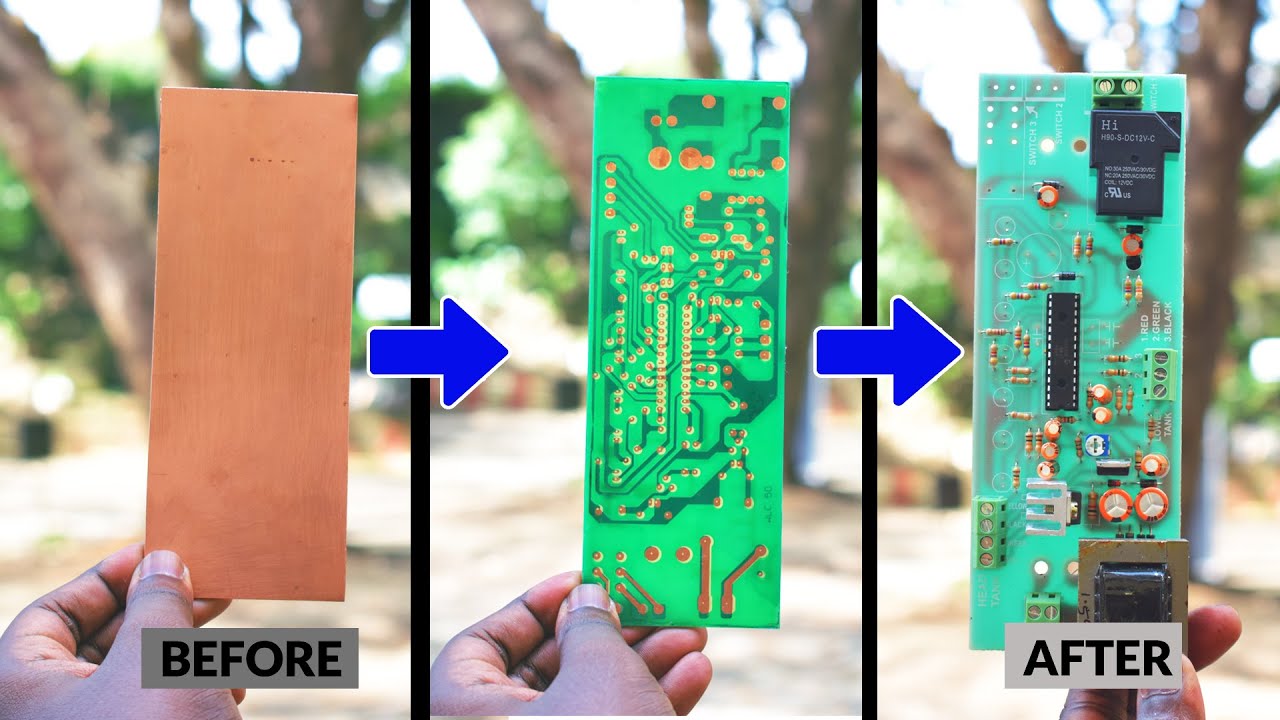
While largely automated assembly machines facilitate modern production, technicians also assemble components manually when required. Surface mount technology (SMT) components have revolutionized assembly by enabling placement directly onto pads rather than through holes and paved the way for miniaturization.
However, through-hole components are still utilized when the design necessitates. Multi-layer boards enable mounting components on both sides or internally between layers. Post-soldering adhesives additionally secure components from vibration damage. Once assembly concludes, comprehensive testing validates all components were soldered properly without faults.
Assembly can be categorized into low, medium, and high volumes based on production volumes. Optimized processes cater to each range. For instance, automation scales cost-effectively for high quantities. In contrast, manual methods afford flexibility for prototypes or low quantities. Every PCB design must eventually undergo a component placement to unleash its innate capabilities.
Assembly transforms imaginative circuit layouts on screens into tangible, functioning boards powering our world's electronic innovations. Having covered the fundamentals of PCB assembly, we now broaden our exploration into the specific preparatory steps conducted before manufacturing in the next section.
Before the PCBA Manufacturing
Prior to commencing printed circuit board assembly, certain preparatory steps prove paramount for optimizing the process and averting issues down the line.
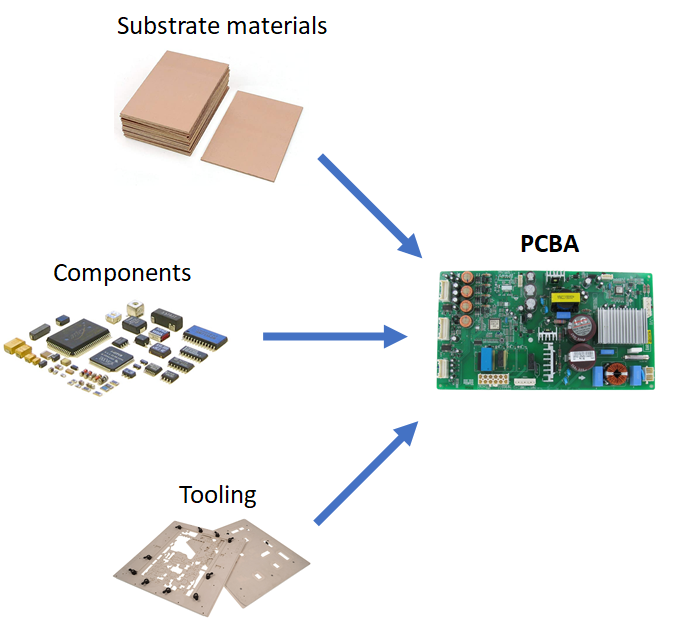
First, for products in the developmental phases, assembling a prototype or two allows verification of the manufacturability of a given design. This provides opportunities to detect and rectify any component spacing, clearance violations, or other impediments before mass production. Prototype builds grant invaluable insight.
Next, those involved in PCB layouts should adhere to design for manufacturing guidelines to facilitate uncomplicated assembly. For instance, maintaining adequate clearance between components avoids collisions, and leaving sufficient space around connectors enables access.
You must also compile a comprehensive bill of materials enumerating every component required, their reference designators, ratings, quantities, and other details essential for procurement. Remember to order extra quantities to account for potential loss or damage. An accurate BOM steers purchasing and ensures you obtain all requisite parts prior to beginning.
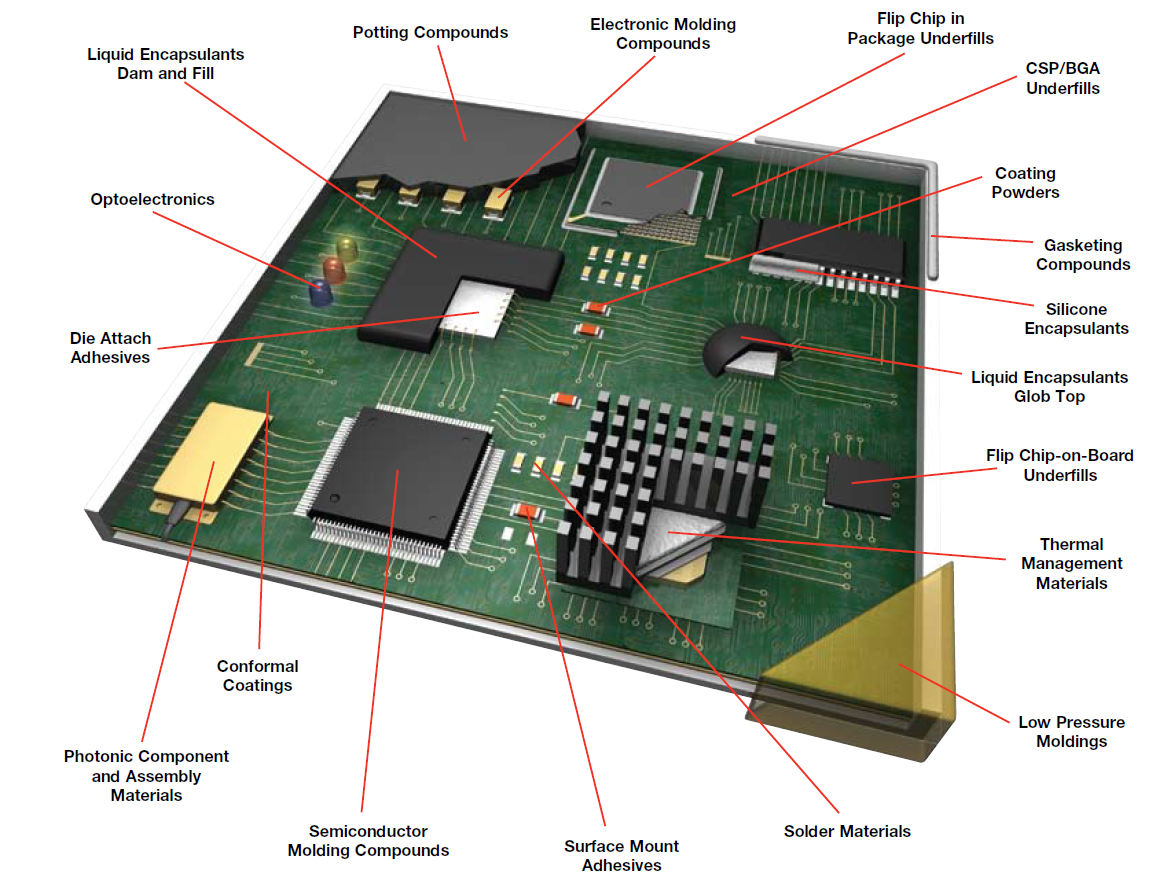
For surface mount assembly, you'll need solder paste stencils custom laser cut from metal sheets with cutouts mirroring the PCB's solder pads. This enables precise solder paste deposition for temporarily adhering SMT components during reflow.
Your assembly equipment and machines will require programming with instructions for positioning and soldering the components based on your board design. For automated assembly, this includes pick and place machine parameters.
Lastly, ensure your PCB design incorporates sufficient test points. This facilitates verifying assembled boards through continuity testing, boundary scans, and other electrical testing needed to validate assembly prior to shipment.
In other words, you should be paying attention to allocating forethought towards design optimizations, comprehensive BOM generation, procuring quality components, equipment preparation, testing provisions, and other upfront matters that pave an expeditious path through subsequent assembly with minimal hiccups.
Now that we've covered that groundwork, I'd like us to delve into the nitty gritty sequence of actually populating components onto the PCBs. This core process promises captivation galore for those intrigued by watching raw boards transform into functional electronic circuits.
PCBA Manufacturing Process
The four predominant assembly methods include surface mount technology (SMT), through-hole technology (THT), a hybrid approach combining both, and BGA assembly.
Surface Mount Technology (SMT) Assembly
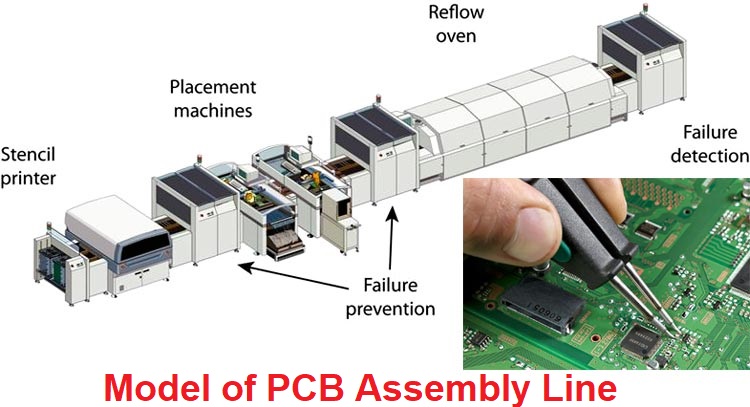
SMT revolutionized electronics assembly by enabling component placement directly onto surface pads rather than through drilled holes. This paved the way for miniaturization. SMT assembly utilizes automated pick-and-place machines to place components in a rapid, high-precision process involving:
Solder Paste Application: The PCB first passes under a solder stencil trimmed to match the copper pad layout. A spreader deposits a thin, even coat of solder paste onto the pads, which acts as an adhesive.
Component Placement: Robotic pick-and-place machines precisely pick surface mount components from reels and place them onto their respective pads according to programmed instructions.
Reflow Soldering: The populated board enters a reflow oven, heating the entire assembly to just above the solder's melting point, solidly fusing components to pads.
Automated Optical Inspection: Post-reflow, cameras verify all components were correctly positioned with no visible defects.
First Inspection: The initial fully assembled board undergoes thorough manual inspection under a microscope, checking positioning, orientation, solder joint quality, and more. To enhance the inspection efficiency, our PCBasic factory has self-invented a PCBA first article tester to automatically inspect the PCB board's properties and functions, avoiding possible human errors.
Flying Probe Testing: Probes check each pad on the PCB for electrical continuity and shorts. This validates assembly before shipping products.
With its rapid production speeds, SMT is ideal for high-volume electronic manufacturing. However, it requires considerable investment in accurate solder stencils, solder paste printers, specialized pick-and-place machines, reflow ovens, and automatic optical inspection systems. But the costs pay dividends when producing thousands of boards.
Through Hole Technology (THT) Assembly
Unlike SMT components, which lack protruding leads, THT components have axial or radial leads that must be inserted through corresponding holes drilled in the PCB substrate.
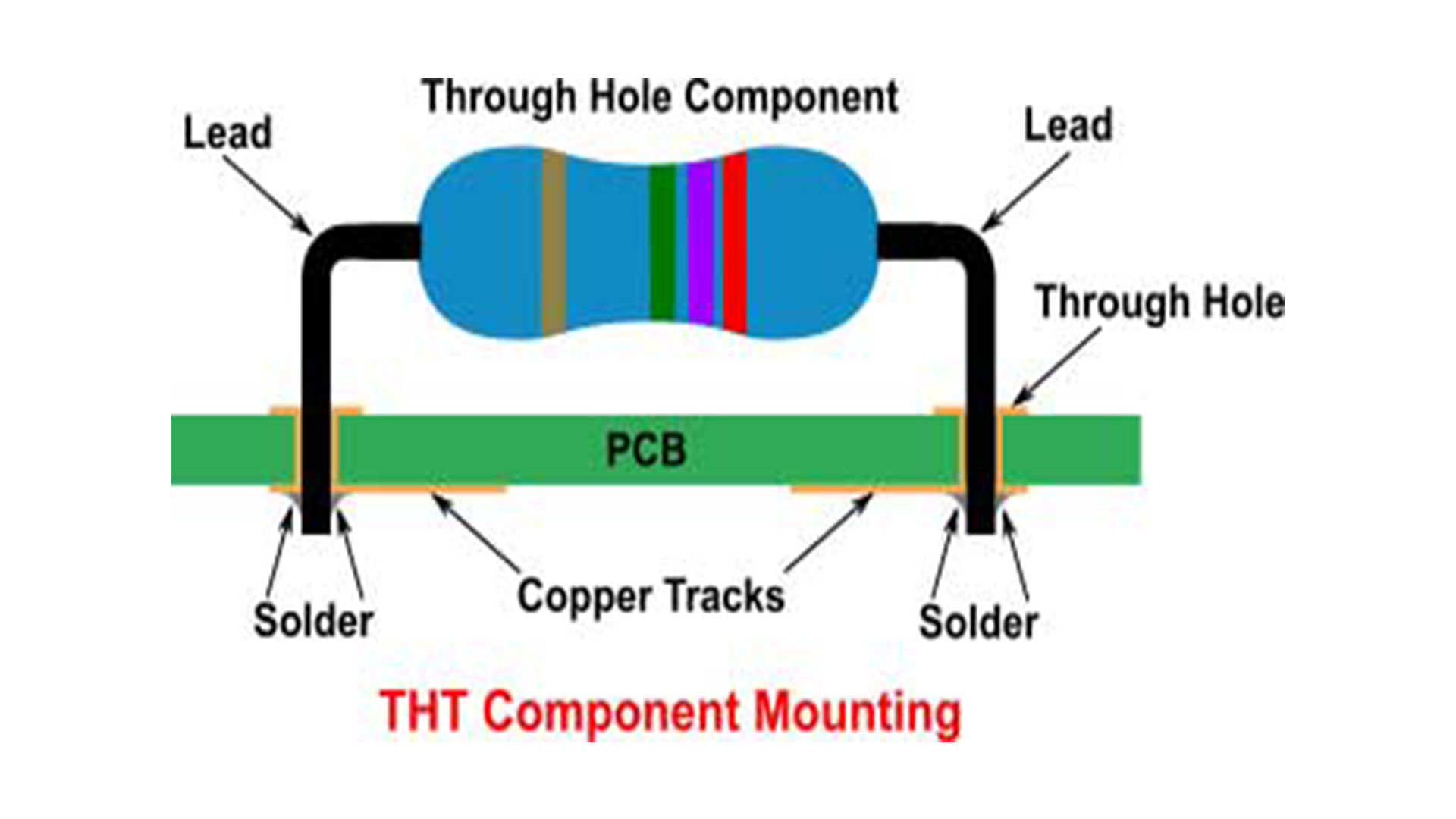
THT assembly involves:
Component Insertion: Using assembly drawings, technicians manually insert components into their designated through-holes on the bottom side of the board.
Lead Bending: Any excess lead length gets folded flush against the PCB surface to prevent dislodgement before soldering.
Wave Soldering: The populated PCB gets passed over a "wave" of liquid solder, coating the exposed leads and pads to form reliable solder joints.
Cleaning: Any post-soldering flux residues are cleaned off using suitable solvents. This prevents future corrosion.
Inspection: Assembled boards undergo manual visual inspection, checking for proper insertion, orientation, and solder joint quality.
Testing: Basic continuity tests validate assembly before any additional production steps. Once all the board production is accomplished, qualified QA testers will run some tests both visually and using advanced machinery. Patented testing machines enables assembly facilities to know if assembled components don't match customers' provided BOM files.
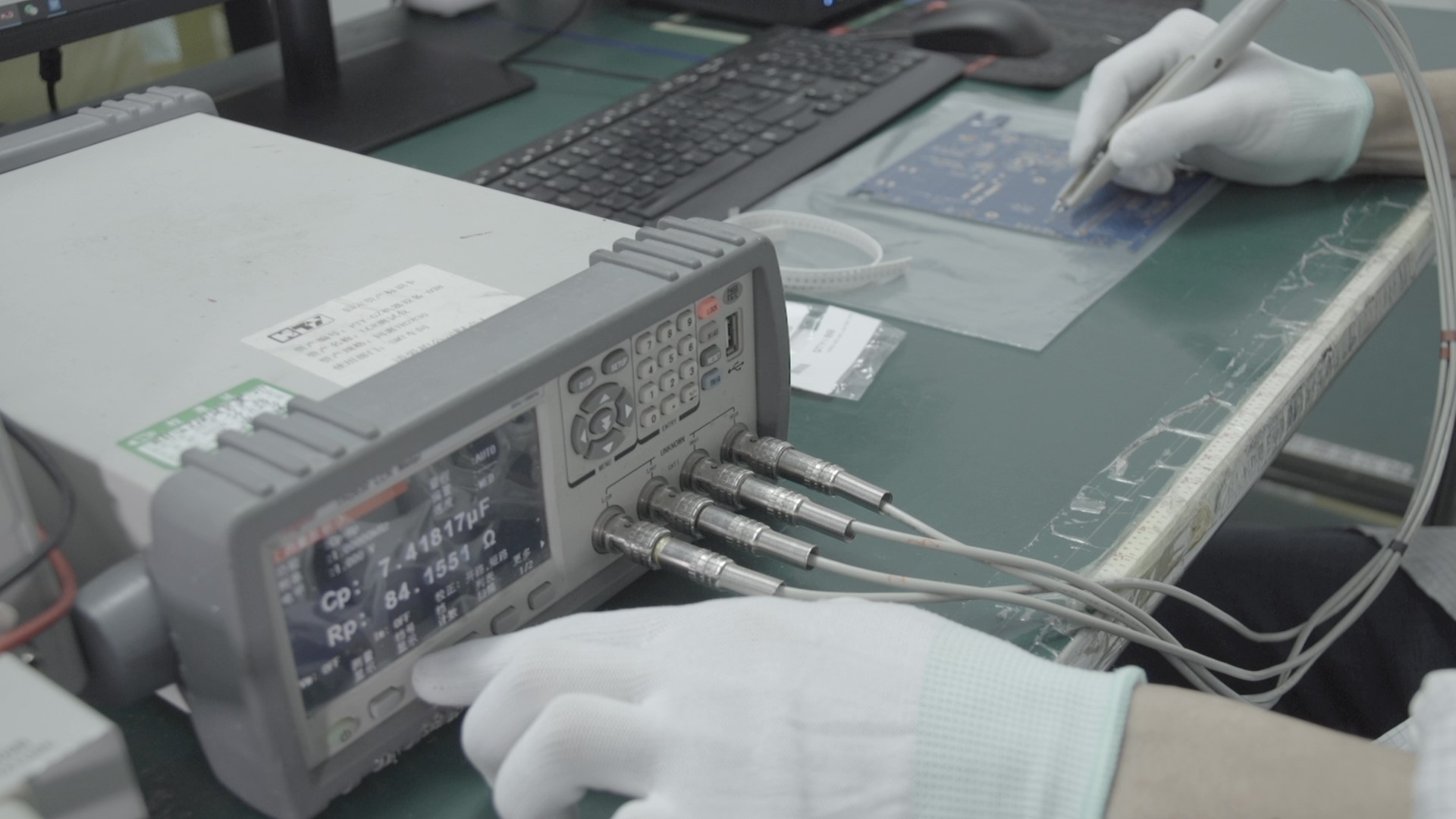
THT assembly supports larger, higher-power components unsuited for SMT processes. The manual methods also afford flexibility in lead forming.
However, it's slower than SMT, with higher labor costs at production volumes. But THT requires less startup expense, which is ideal for lower quantities.
Hybrid Assembly
For printed circuit boards requiring both surface mount (SMT) and through-hole (THT) components, a hybrid assembly process combines the best of both technologies:
SMT Component Placement
High-precision pick-and-place machines populate the SMT components based on programmed instructions. These machines use vacuum nozzles to pick components from reels, trays, or sticks and accurately place them on their PCB pads.
Optical alignment systems provide accurate positioning down to tolerances of 0.1mm or below. This ensures components are placed in the exact intended location.
Feeders provide a constant supply of components to the pick-and-place head. Tape-and-reel configurations are common for small-sized SMT parts.
SMT Reflow Soldering
● The PCB with all SMT parts placed enters a reflow oven to attach components permanently.
● Different heat zones preheat, gradually ramp up the temperature, sustain at reflow peak, and then cool in a controlled profile designed for the solder paste used.
● Typical reflow temperatures range from 200-250°C, held for 60-90 seconds. The process must be optimized to avoid damaging sensitive components.
● Solder paste melts/alloys with copper pads and component leads to create reliable electrical and mechanical joints.
● A nitrogen atmosphere prevents oxidation while soldering.
THT Component Insertion
● Any through-hole components are manually inserted after SMT reflow while the board is still clean.
● Technicians refer to assembly drawings indicating the correct component placement. Parts may be kitted beforehand.
● Leads are inserted through the corresponding PCB holes until flush against the board. Bending leads ensures parts stay secured.
THT Wave Soldering
● The PCB populated with THT parts passes over a wave or fountain of molten solder at 230-260°C.
● The turbulent wave coats the exposed component leads and pads as the board travels over them to form solder joints.
● Common solder alloys like SAC305 or Sn63Pb37 are used. Nitrogen blanketing prevents oxidation.
● Flux agents facilitate wetting, and then post-solder cleaning removes any residues.
Testing and Inspection
● Electrical testing like in-circuit tests or flying probes verify all solder joints are satisfactory with no shorts or opens.
● Automated optical inspection and manual microscopic checks confirm successful soldering and assembly.
● If any rework is needed, technicians can touch up solder joints or replace defective components.
This hybrid approach provides the flexibility to optimize assembly based on component types while minimizing potential soldering defects. It takes full advantage of both SMT and THT technologies for quality and efficiency.
BGA Assembly
In addition to SMT, THT, and hybrid assembly, another advanced technique called BGA (ball grid array) assembly is growing in popularity for complex devices with high I/O density. Let's explore what constitutes BGA assembly.
BGA components utilize a grid of solder balls on the underside as their terminations instead of leads or pads. These solder ball interconnects offer several advantages:
● Higher densities accommodating more I/Os in compact footprints
● Reduced inductance for faster electrical speeds
● Resilience to mechanical stresses from thermal expansion
● Capability for higher pin counts reaching the thousands
● Suitability for advanced IC packaging like CPUs
However, assembling BGAs poses challenges not encountered with standard SMT components:
● Precise solder ball alignment to PCB lands is critical
● Limited visual inspection access underneath the package
● Low clearance between solder balls risks shorts
● High-temperature assembly can damage the ball grid
● Rework is very difficult after attachment
BGA assembly necessitates advanced precision equipment and processes explicitly tailored to handle the challenges associated with dense ball grid arrays. However, the benefits afforded by BGAs continue to drive their increased adoption across industries.
Our factory has developed specialized capabilities to assemble BGAs, including:
● Advanced stencil printing with 3D optical inspection
● Pick-and-place with precision split optics alignment
● Profile-optimized convection reflow ovens
● High-resolution X-ray inspection and 2D/3D CT scanning
● Boundary scan testing for packaged devices
● Conformal coating options to prevent tin whiskering
So whether your designs require 100 or 10,000 ball grid array packages, they are cutting-edge processes and expertise to deliver defect-free, high-yield BGA assembly catered to your technical requirements and production volumes.
SMT, THT, hybrid, and BGA assembly each offer specific advantages that make them suitable for particular applications depending on factors such as quantities, component selections, product complexity, quality targets, and production environments.
Between, we've got an experienced team that can evaluate your product assembly requirements and recommend the ideal process to deliver high-quality boards on time and within budget.
SMT vs. THT vs. Mixed PCB Assembly
Now that we've covered the major PCB assembly techniques in detail, it helps to directly compare surface mount (SMT), through-hole (THT), and mixed technology approaches to comprehend their respective advantages and applications.
First, let's explore a high-level comparison between SMT and THT assembly:
SMT vs THT
Think sleek. Think modern. That's SMT for you. As its name suggests, SMT involves placing components directly on the surface of a PCB. This method allows for a high component density, and given that components can be mounted on both sides of the board, it's no surprise that it's the method of choice for most modern electronic devices.
Now, if SMT was the fresh-faced newcomer, THT is the wise old sage. THT involves inserting component leads through holes drilled in the PCB and then soldering them on the other side. This technique, which dominated electronics manufacturing for decades, offers robustness and reliability.
|
SMT Assembly
|
THT Assembly
|
|
Components have leads/pads on bottom
|
Components have leads inserted into holes
|
|
Automated pick-and-place
|
Manual insertion by technicians
|
|
Small components sizes
|
Supports larger components
|
|
Higher component density
|
Lower component density
|
|
Reflow soldering
|
Wave soldering
|
|
Higher initial investment
|
Lower startup costs
|
|
Faster assembly speed
|
Lower production rate
|
|
Ideal for high volume PCBA manufacturing
|
Suited for low-medium volume PCBA manufactuing
|
|
More difficult rework
|
Easier rework
|
SMT was a game changer in electronics assembly and manufacturing, enabling automated production by eliminating the need to insert lead components manually. The pick-and-place machines and reflow process brought speed, precision, and quality to high-volume assembly. It expanded possibilities for miniaturization.
However, SMT has notable disadvantages, like high equipment startup costs and challenges during reworking defective parts on dense boards. This makes THT still preferable for quick-turn prototypes or lower quantity jobs where manual assembly has advantages. THT also supports component types unsuited to SMT, like bulky connectors or transformers.
Mixed vs SMT vs THT Assembly
But what if you want the best of both worlds? That's Mixed Assembly. This method combines the advantages of both SMT and THT. A typical scenario might involve using SMT for most components while reserving THT for components that require robust anchoring, like connectors or large capacitors.
Now let's compare mixed technology assembly, which combines both SMT and THT processes:
|
Mixed Technology
|
SMT and THT Separately
|
|
Single unified process
|
Separate SMT and THT lines
|
|
Lower investment in equipment
|
Duplicated SMT and THT equipment
|
|
Potential soldering defects
|
Optimized process for each
|
|
Compromised optimization
|
Maximum quality on each line
|
|
Technical complexity
|
Simpler individual processes
|
Performing SMT and THT assembly concurrently can lower capital costs by reducing equipment redundancies. However, bridging flaws and other defects often arise when integrating both soldering processes in one pass. This fuels a reliance on extensive inspection and rework to ensure quality.
Separate lines optimized specifically for SMT and THT provide maximum control, quality, and yield for each technology type. This does require increased investment in duplicating equipment but provides independent optimization and simplified processes focused on a single assembly technique.
Alright, below is a table summarizing the core differences between SMT, THT, and mixed assembly processes:
|
Assembly Type
|
SMT
|
THT
|
Mixed
|
|
Component Style
|
Surface mount
|
Through-hole
|
Both
|
|
Equipment
|
Pick-and-place machine
|
Soldering irons, wave soldering
|
Requires both
|
|
Automation
|
Fully automated
|
Manual
|
Partial
|
|
Speed
|
Very fast
|
Slow
|
Moderate
|
|
Costs
|
High startup and production costs
|
Low startup and production costs
|
Balanced
|
|
Defect Rate
|
Lower
|
Higher
|
Highest
|
|
Volume Suitability
|
High
|
Low/Medium
|
Medium/High
|
In summary, the assembly technique selected dramatically impacts quality, costs, and production capabilities. SMT favors high-volume automated production. THT supports lower volumes with flexibility. Mixed technology strikes a balance between the two while increasing process risks.
Manual vs. Automated PCB Assembly
When embarking on a PCB assembly project, one crucial decision is whether to utilize manual or automated manufacturing processes. Each approach carries distinct advantages and limitations depending on factors like production volumes, quality requirements, costs, and technical complexity. Let's explore these key differences.
— Manual PCB Assembly
Manual assembly involves skilled technicians using microscopes, tweezers, and soldering irons to meticulously place and attach components onto PCBs by hand. It affords tremendous flexibility during prototyping when design changes are still occurring.
Engineers can modify component placements or swap parts without extensive reprogramming as is required with automated equipment. For low-volume production, manual assembly keeps startup costs affordable since minimal equipment is needed. However, it inevitably sacrifices speed. Populating boards manually is quite tedious and time-consuming, making manual methods ill-suited for medium or high production levels.
Technicians must undergo extensive training to become adept at the delicate process of precision component positioning and soldering. But human fallibility means some inconsistency and errors are unavoidable. Each board produced manually won't be identical.
While inspecting each board can mitigate this, increased quality control steps impact the throughput. The costs of manual labor at scale also add up rapidly. Yet for assembling highly complex or low quantity boards, experienced technicians still reign supreme.
— Automated PCB Assembly
In contrast, automated assembly utilizes advanced robotic equipment to place and solder components. Programmed pick-and-place machines precisely populate boards an order of magnitude faster than humanly possible. For high-volume production, automation achieves unparalleled consistency and speeds with minimal errors.

But first, the machines require extensive upfront programming based on the board design to define the placement routines. This lacks flexibility since any component or layout changes later means reprogramming the lines.
While automated optical inspection and testing catch most defects, the systems lack human judgment for spotting subtle anomalies. Rework also proves challenging since technicians cannot simply tweak individual joints. Instead, correcting issues requires pulling the board from the line and either reprogramming the system or performing manual touch-ups.
The fixed costs of automated equipment and programming are only justified once amortized over thousands of boards. Automation enables round-the-clock production unattended, but the reduced labor costs trade-off with larger capital costs.
Smaller businesses may find it daunting budgeting six-figure investments in proprietary pick-and-place systems just to get started. However, large OEMs running high-volume production count on automation to stay competitive.
Below is a comparison table summarizing the key differences between manual and automated PCB assembly:
|
Factor
|
Manual Assembly
|
Automated Assembly
|
|
Costs
|
Lower startup costs, higher labor costs
|
Higher initial investment
|
|
Speed
|
Very slow, tedious process
|
Extremely rapid, unattended
|
|
Changeover/Flexibility
|
Design changes easily accommodated
|
Requires reprogramming lines for each change
|
|
Labor Requirements
|
Highly skilled technicians
|
Lower headcount plus skilled programmers
|
|
Quality
|
Prone to human errors and inconsistencies
|
High consistency and precision
|
|
Volume Suitability
|
Ideal for prototypes and low quantities
|
Optimized for mass production
|
|
Process Control
|
Greater ability to catch subtle defects through inspection
|
Depends more on programming and machine vision
|
|
Fault Recovery
|
Easier rework of solder joints
|
Challenging reprogramming just for repairs
|
In essence, manual techniques support low-volume complexity, while automation facilitates high-volume consistency. Astute engineers will leverage the best of both worlds by combining manual and automated processes for optimum flexibility, quality, and cost control.
The goal is to determine the ideal balance between automation efficiencies and manual techniques for the particular product. With expertise across the spectrum of assembly methods, our seasoned team stands ready to help identify the ideal solutions to fit your specific application.
Low Volume, Medium Volume, and High Volume PCB Assembly
PCB assembly volumes vary tremendously across sectors and applications. Optimizing processes for building 1,000 boards monthly entails vastly different considerations than a million boards annually. Let's look at how assembly factors differ across low, medium, and high-volume production.
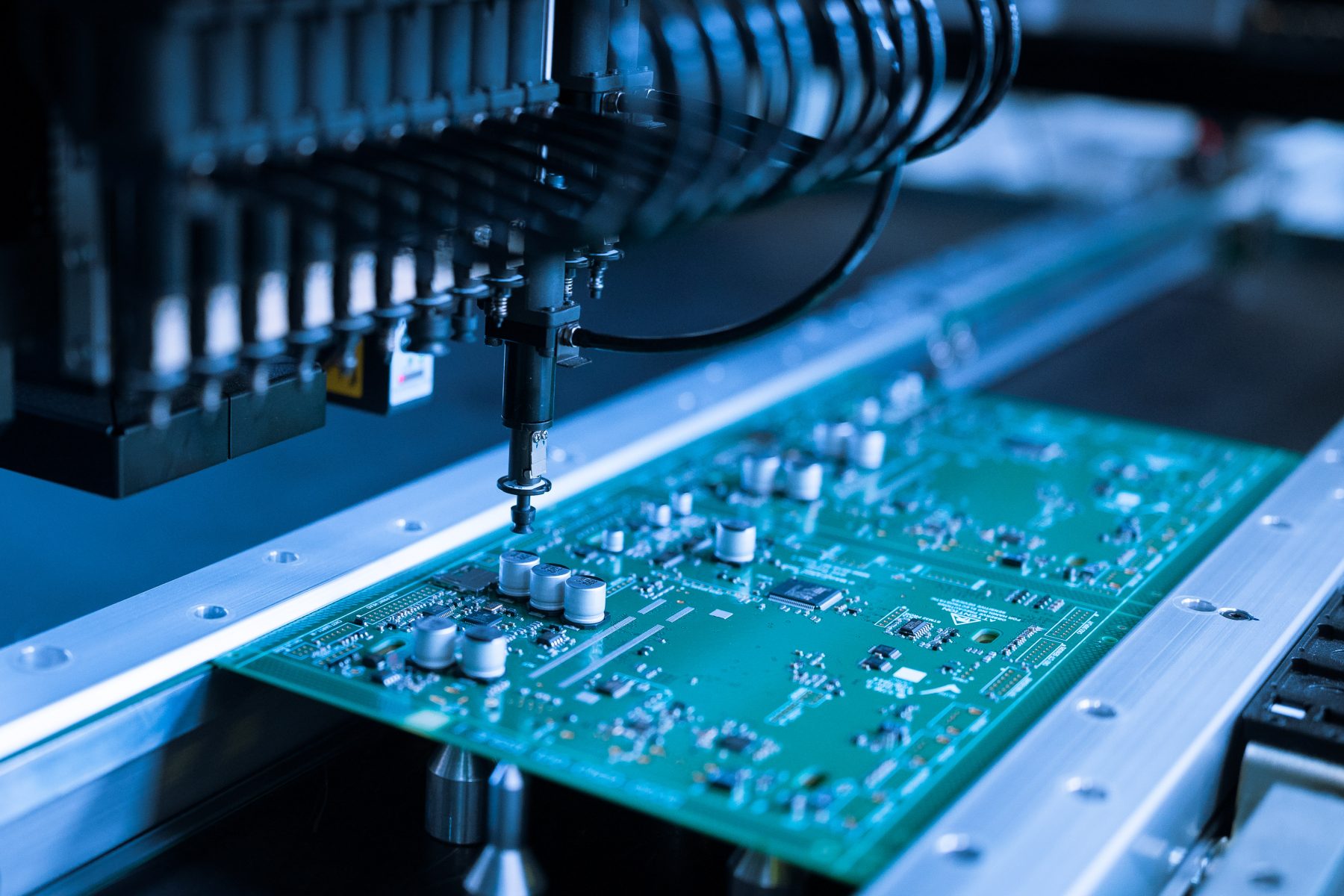
Low Volume PCBA
At the lower end, volumes under 1,000 boards per month constitute a low-volume assembly. Here, flexible manual techniques are generally the most practical and cost-effective. The fixed costs of specialized equipment can only be justified with massive quantities.
For low volumes, skilled technicians can meticulously hand place and solder components without luxuries like automated optical inspection. Minimal startup costs make manual assembly accessible for smaller companies. Shorter assembly runs are also easier to schedule when capacity isn't booked out on fixed automated lines.
The downside is less throughput, higher labor costs, and potential quality inconsistencies. Yet the hands-on approach allows engineers to tweak designs or customize builds. With attention to quality control and screening, manual methods yield high returns for complex low-volume assemblies.
Middle Volume PCBA
In the middle tier, volumes between 1,000 to 10,000 boards per month signal gains from moderate automation. Production scales enough to potentially recoup investments in basic pick-and-place machines or selective soldering.
This supplements manual activities to boost productivity on repetitive tasks while preserving flexibility for custom elements. Balancing automation efficiencies against manual oversight and rework allows economical ramping to mid-tier quantities.
Testing and inspections remain essential safeguards as volumes climb. The mix of automated plus manual techniques provides a scalable bridge before committing to fully automated high-volume lines.
High Volume PCBA
Finally, volumes exceeding 10,000 boards per month demand dedicated high-volume assembly lines. Here, the astronomical throughput of advanced pick-and-place systems and rapid soldering modulars pay dividends.
With substantial fixed costs budgeted upfront, automation maximizes consistency and quality at fractions of manual assembly costs. High-volume PCBA manufacturing depends on these sophisticated, high-precision techniques to stay globally competitive.
The highly automated facilities run nearly around the clock, cranking outboards. But with limited manual oversight, rigorous inline testing and inspection must catch any occasional defects. High-volume automation trades hands-on flexibility for unmatched speeds and economies of scale.
Here is a table that summarizes how core considerations differ across low, medium, and high-volume PCB assembly:
|
Factor
|
Low Volume
|
Medium Volume
|
High Volume
|
|
Quantities
|
<1,000 boards/month
|
1,000-10,000 boards/month
|
>10,000 boards/month
|
|
Cost Considerations
|
Minimized startup costs
|
Balanced investments
|
Maximum automation
|
|
Labor Requirements
|
Higher, manual
|
Moderate, mixed
|
Lower, programming focused
|
|
Quality Approach
|
Inspection-driven
|
Increased automation plus inspection
|
Automated inline testing
|
|
Assembly Type
|
Manual
|
Manual + moderate automation
|
Dedicated automated lines
|
|
Production Environment
|
Flexible
|
Semi-fixed
|
Continuous mass production
|
|
Changeover
|
Frequent revisions accommodated
|
Some flexibility remains
|
Fixed automated routines
|
Recognizing where volumes justify transitions between manual, semi-automated, and high-volume techniques is crucial. Seeking the optimal intersections maximizes quality and cost control throughout scaling.
With expertise across this entire spectrum, our adaptable factory has the agility to deliver both the precision of automation and care of manual craftsmanship.
Whether you require a hundred intricately assembled prototypes or a million boards flowing daily, our team has the know-how to identify assembly solutions tailored to your specific volumes and production needs.
Terminology Related to PCB and PCBA Manufacturing
Last, I've gathered some terminology related to PCB and PCB assembly process for better understanding:
Annular Ring
The annular ring refers to the exposed copper area surrounding a plated through hole on a printed circuit board. It provides the surface where solder can adhere to form a reliable connection between the PTH barrel and the pad or plane on the outer layer. A sufficient annular ring width is required to ensure adequate solder joint strength.
DRC
Design rule checking (DRC) is an essential verification step in PCB design. DRC analyzes the board layout against a preset list of constraints related to spacing, clearances, pad sizes, etc. Any violations get flagged for designers to correct. This avoids potential manufacturability issues downstream.
Drill Hit
A drill hit refers to where a drill bit will create a hole in the PCB substrate during fabrication. Drill hits represent locations of vias or through-hole pads where component leads will be inserted.
Finger
A finger refers to a long, thin protrusion extending from a pad, trace, or pour area. It is used to increase the available contact surface for soldering or component mounting. Fingers help maximize mechanical adhesion and electrical connectivity.
Mouse Bites
Mouse bites are small voids purposefully designed into copper features on a PCB to prevent solder wicking. The "bites" constrain solder flow, helping prevent shorts between closely spaced traces or pads during assembly.
Pad
A pad is a conductive area (usually copper) on the PCB surface where component leads or wires are soldered. Pads connect to inner layer traces, allowing electrical connectivity.
Panel
A panel refers to a larger board from which individual PCBs are cut. Manufacturing identical boards in a panel arrangement improves fabrication efficiency. The boards are later depanelized.
Paste Stencil
A paste stencil is a thin metal sheet laser-cut with apertures matching the solder pads on the PCB. During assembly, it deposits solder paste precisely onto pads before component placement.
Pick and Place
Pick and place machines automatically select components and accurately place them onto their pads on a PCB. This automates the population of boards in preparation for soldering.
Plane
A plane is a continuous copper area serving as a low-impedance reference in a circuit. Planes provide large ground or power networks, enhancing electrical performance.
Plated Through Hole (PTH)
PTHs are holes with conductive barrel walls allowing connections between layers in a multilayer PCB. Electroless plating deposits copper to facilitate component insertion.
Pogo Pin
Pogo pins are spring-loaded pins used to make reliable temporary electrical connections, such as interfacing ICT fixtures with boards during testing. The pins compress on contact.
Reflow Soldering
Reflow soldering uses precisely timed heating to melt solder paste deposits, forming reliable electrical joints between pads and component leads. This is the primary soldering process in SMT assembly.
Solder Paste
Solder paste contains suspended solder alloy particles blended with flux. It is printed on pads, providing temporary adhesion for components before permanent reflow soldering.
Why PCBasic is a Reliable PCB Assembly Manufacturer
With over 15 years of perfecting our craft, PCBasic has earned a reputation as a trusted provider of exemplary PCBA solutions. We stand behind our commitment to deliver swift service without compromising quality.
Our expertise across the spectrum of PCBA technology and PCB design services enables us to identify and implement customized solutions tailored to each client's unique requirements.
Our forward-thinking development of proprietary management systems demonstrates our dedication to digital intelligence and cementing our status as an industry frontrunner.
Furthermore, we've garnered invaluable proficiency serving diverse sectors through our rigorous approach to prototyping, testing, and ensuring functionality first and foremost.
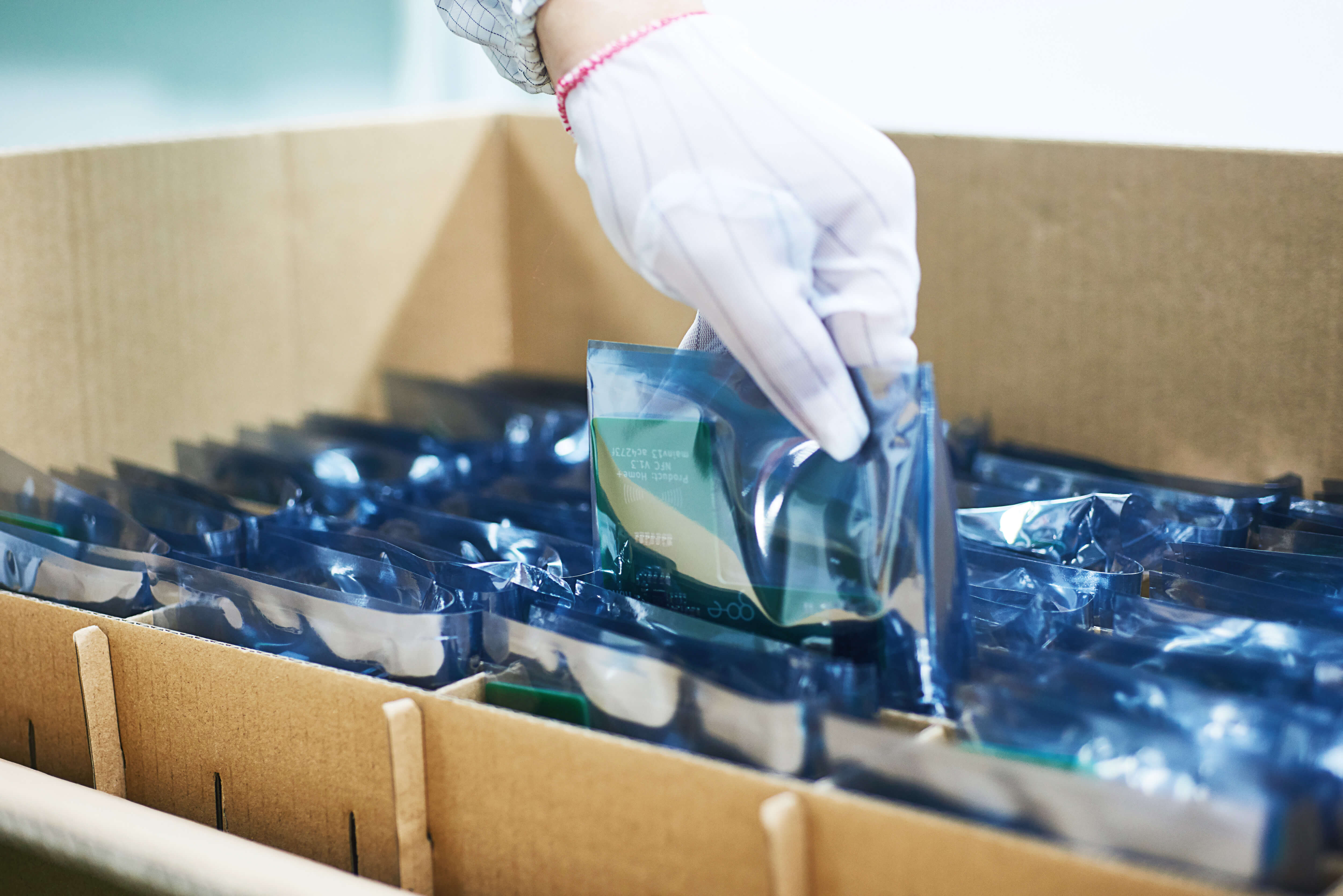
When partnering with PCBasic, you gain a resource dedicated to fully comprehending your objectives and ensuring a seamless journey from concept to delivery.
Our obsessive focus on quality, coupled with a collaborative spirit, make us the ideal manufacturing partner for your next PCB assembly project.














 About PCBasic
About PCBasic






